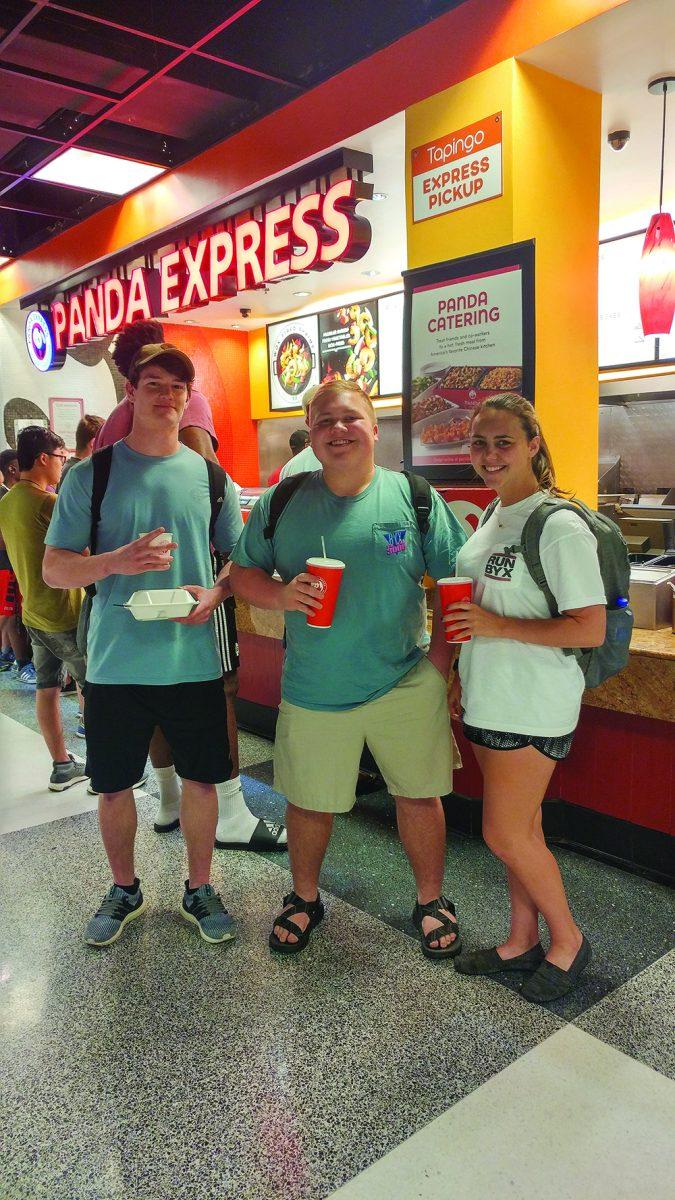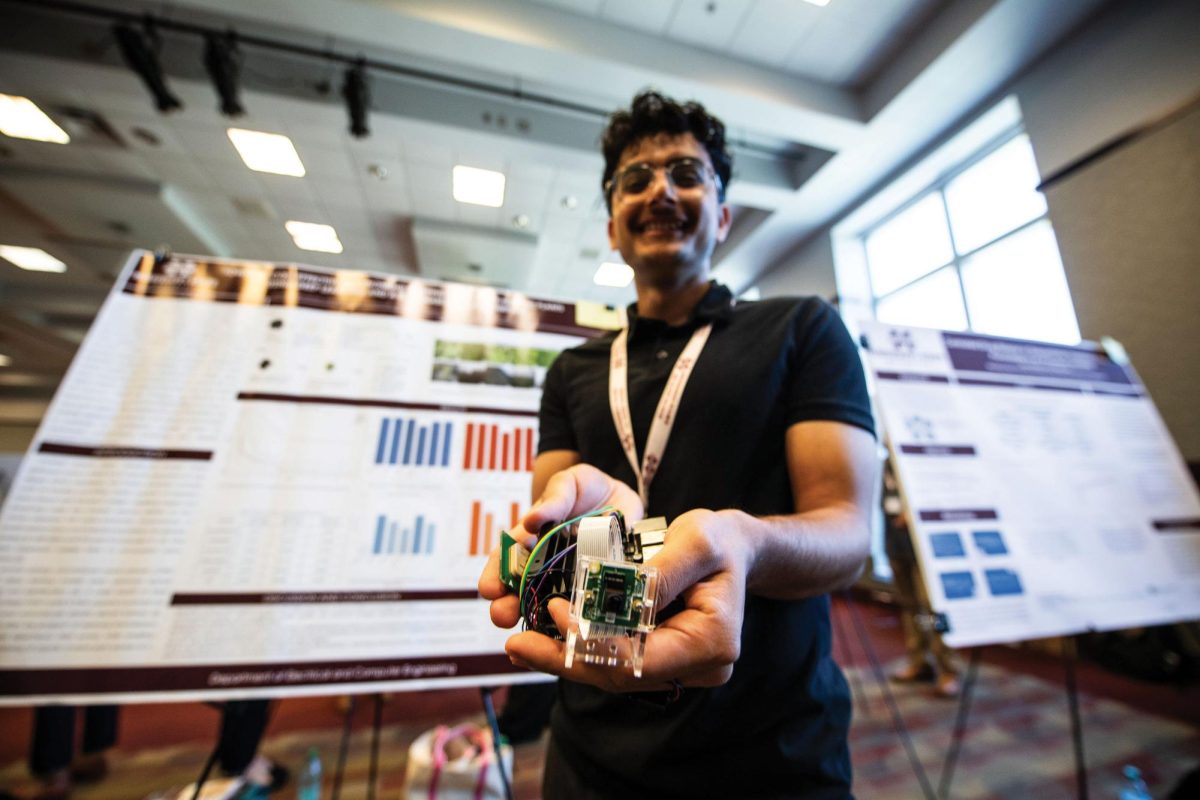Upon arrival at Mississippi State University, new students will start hearing strange jargon from older students who are more experienced with the meal plan vocabulary. Fellow classmates will use words such as “block” and “flex” as if everyone knows these words and can transfer them to the context of meal plans. In terms of college food vocabulary, “block” does not refer to the wooden cube toddlers play with, or MSU women’s basketball alumna Teaira McCowan’s signature basketball move. Similarly, “flex,” in this sense, is not associated with triceps.
It might take a moment to become acquainted with these terms, but once students get into the swing of all the university happenings, these terms will become second nature. The benefits of understanding the uses and price equivalences of each are invaluable.
Flex dollars or “flex” refers to the actual dollars within your student meal plan. Most incoming students will start off with 150 flex dollars for the fall semester. Every U.S. dollar is equivalent to one flex dollar, so it is essentially the same as having $150 in your account to use for athletic game concessions and food purchased at non-cafeteria locations. Your excess flex from the fall semester will also carry over into the spring semester. However, remaining flex dollars at the end of the spring semester will expire.
Cody Gressett, a freshman biomedical engineering major, saved all his flex from the fall semester to use this spring semester.
“I think it’s better to have flex at the end of the year, and I was able to use it to get bigger meals,” said Gressett.
Block meals are basically passes to eat at the university cafeterias.
Block meals are also redeemable at specific locations after 4 p.m. The block meal is redeemable for up to $6. Anything below $6 will not cost anything from your flex, and any amount above $6 will be taken from your flex dollars. In this five-hour time frame from 4-9 p.m., students may use one block meal to purchase anything $6 and under. This applies to Chick-fil-A, Pizza Hut, Panda Express, Provisions on Demand (P.O.D.) and Olilo, all located in The Union. You may also purchase Einstein Bros. Bagels, located right inside the second floor of the library, and Burger King, located next to the post office.
After 9 p.m., students have another block meal they may use at the aforementioned locations. Therefore, students could use a block meal to purchase food from these locations from 4-9 p.m. and then hop back in line right after 9 p.m. for another block meal. Block meals after 9 p.m. are referred to as “9 o’clock block.” You cannot redeem your 4-9 p.m. block from a non-cafeteria location if you have already swiped your card at a cafeteria during that time, but you can swipe for another block redemption after 9 p.m.
Since block meals cap off at $6, registers will automatically charge any excess to your flex. Various combinations of meals can be purchased without going more than 50 cents over the designated $6.
In terms of meals and entrées, one can purchase a ten-piece nugget and small fries at Burger King for just 18 cents of flex or two bacon cheeseburgers and a medium fry for 28 cents over your block. At Panda Express, a small entrée and one cream cheese rangoon is only 47 cents over the $6, or three chicken egg rolls only will charge 26 cents of flex. Many people get a 12 count meal from Chick-fil-A and overshoot the $6 block, which will dip into their flex dollars by $3.62. Instead, order a chicken sandwich meal and a water cup at Chick-fil-A as one block meal, while only going 50 cents over. Though the food combinations which stay under the regular block is limited at Pizza Hut, students can get a “personal-sized” cheese or pepperoni pizza with a water cup and actually remain 66 cents under the $6 block.
For someone with a strong hankering for sweets, a large milkshake and small cup of soft-serve will only count for 40 cents of flex with a block purchase. The same applies to a large milkshake and a small soft-serve ice cream cone, only going 3 cents over. At Burger King, as many as four Hershey’s sundae pies total at a mere 38 cents of additional flex. For those sweet-and-salty dual eaters, Chick-fil-A french fries and a small milkshake only cost 40 cents.
While it is fun to try all the different combinations one block meal may provide, the most beneficial meal is likely at the Perry or Fresh because of the healthier food options, which supply a more well-balanced diet than soft-serve ice cream alone.
Griffin Adcock, a sophomore industrial engineering major, enjoys the options of a meal plan.
“I like the variety block and flex offer. When you get tired of one type of meal, there’s always another option,” Adcock said.
The university dining halls provide home-cooked meals, salad bars, fruit, vegetables and vegan options. With one block meal, students have a practically endless variety of options which include healthier foods. The cafeterias are available for breakfast, lunch and dinner. The Perry is open for breakfast and lunch, and the Fresh is available for lunch and dinner.
Jeffery Garrett, a sophomore mechanical engineering major, advises students to maximize their block meals at the Perry.
“If you are the type of person that likes to eat three meals a day, you should go to the Perry for breakfast and lunch because it’s free,” Garrett said. “Don’t go to the Union for lunch because it’s expensive, and flex adds up.”
With all this being said, it is beneficial to save flex dollars for sporting events’ concessions stands and for restaurants which do not accept block, such as Starbucks or the State Fountain Bakery. With the benefits of block meal hours and the various food combinations that stay within 50 cents for each meal, flex can last a student a long time.
Gloria Ross, a cashier at The Perry Cafeteria, encouraged students consider their choices before they buy a meal.
“Use your block and flex wisely,” Ross said.










